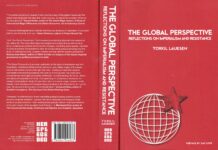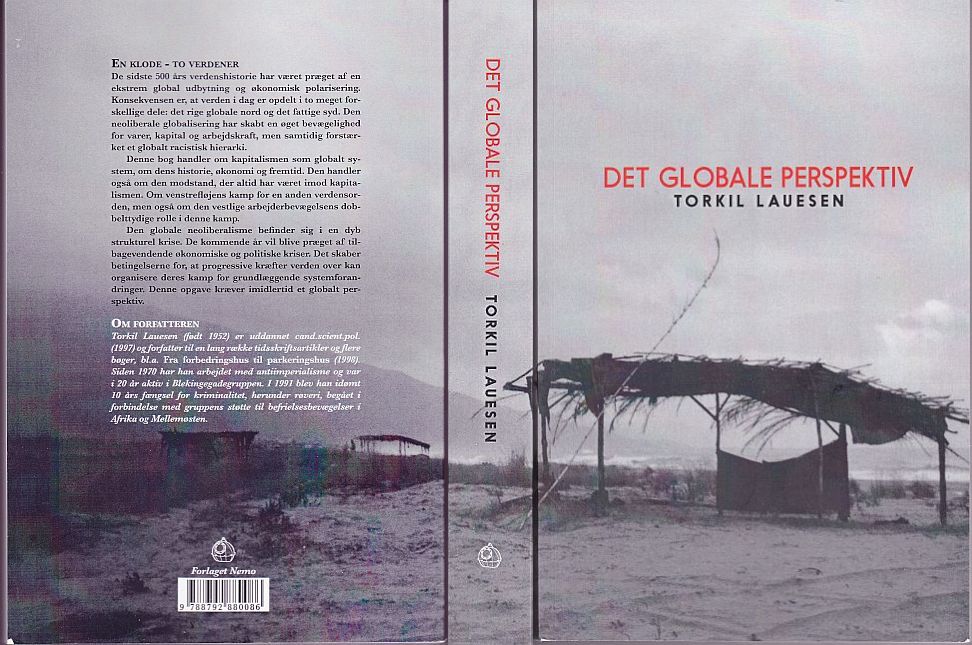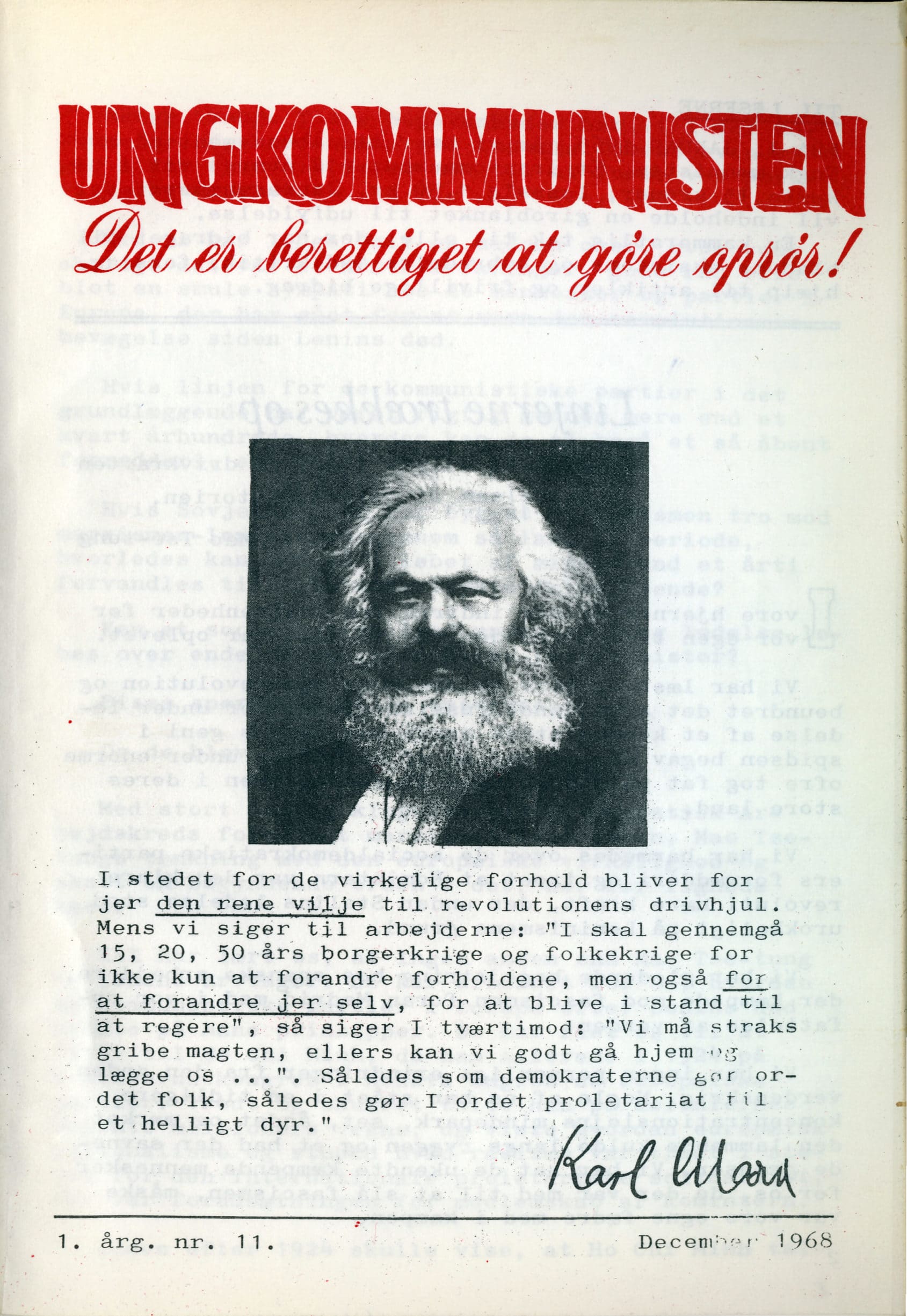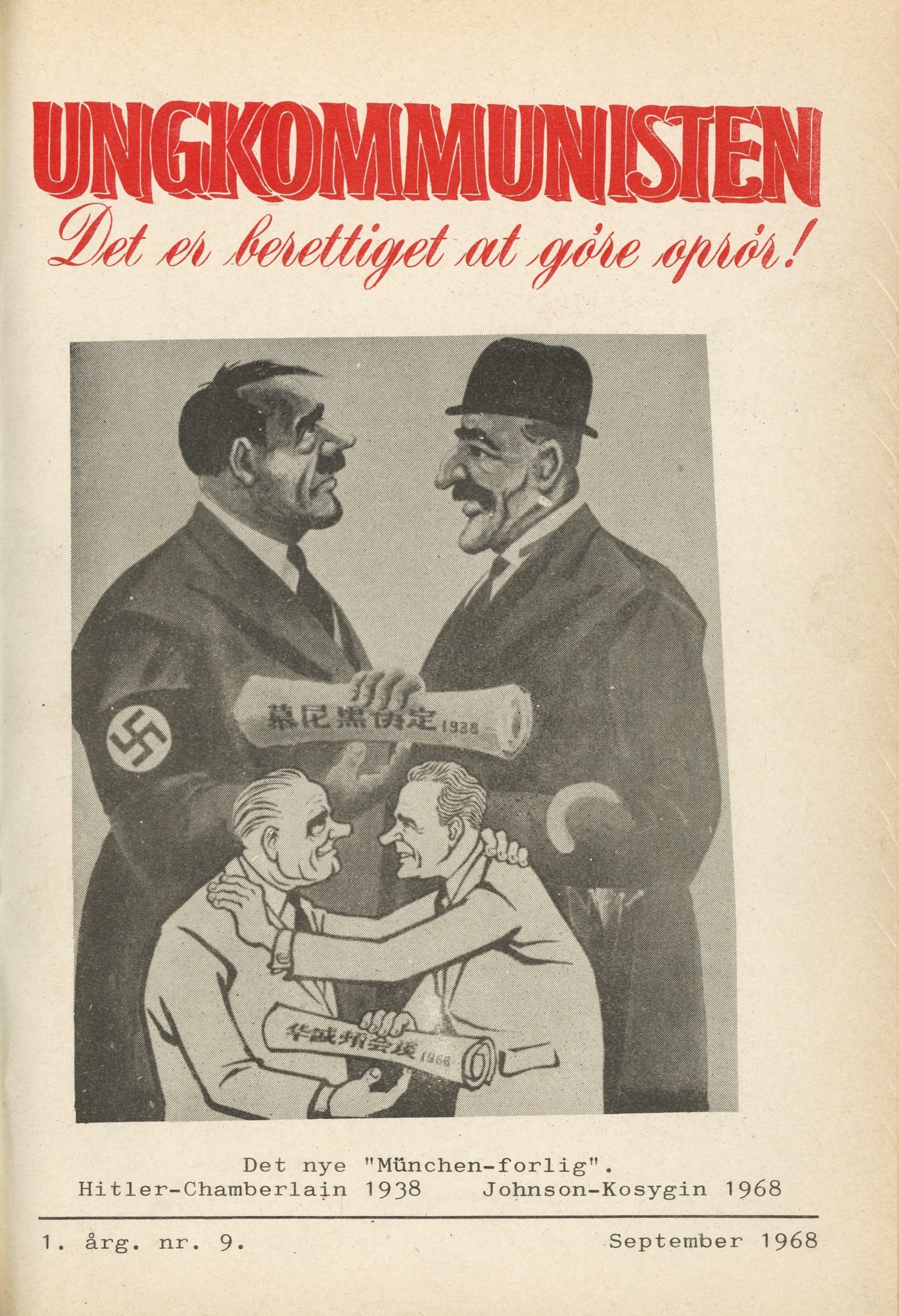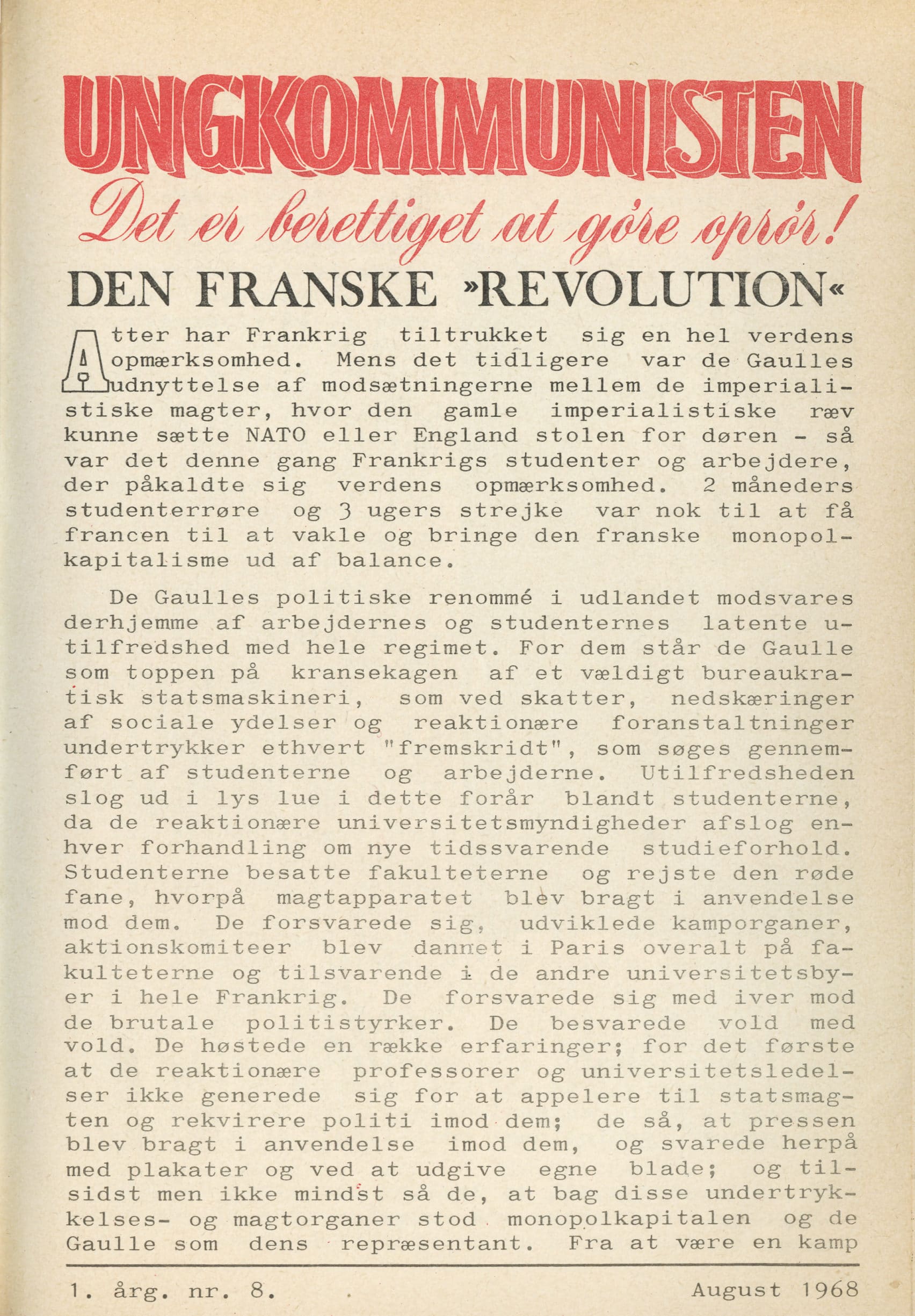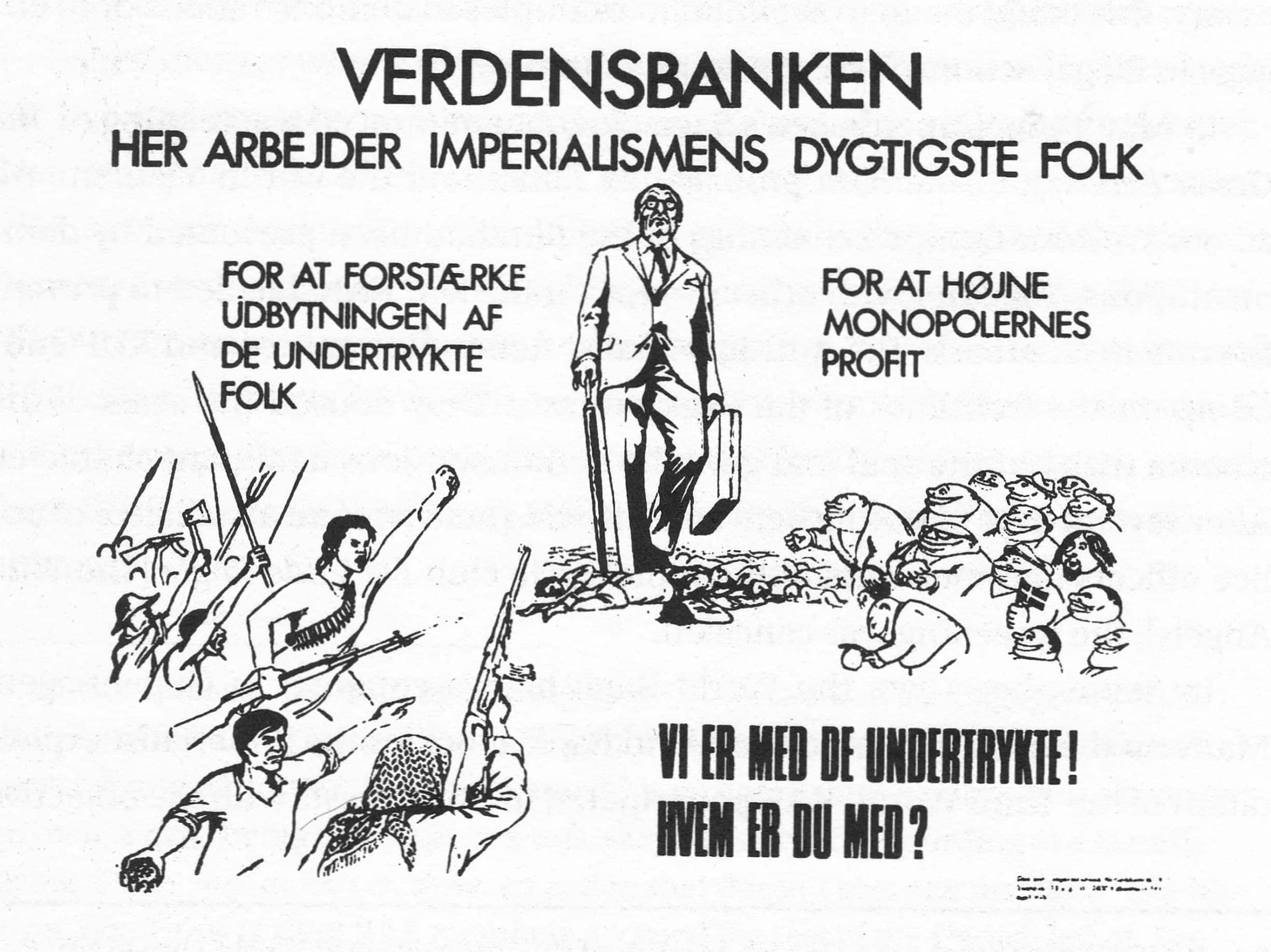About the text:
From: Communist Orientation No 1., April 10, 1975, pp. 12-16.
Translated from Danish “Kommunistisk Orientering”, nr. 3, 24. februar 1975, s. 5-11.
From 1800 to independence India – the British colony comprising present India, Pakistan and Bangladesh – experienced at least 7 major periods of famine. During the period from 1866 to 1878 alone, there were three great famine catastrophes with close to 10 million victims. Among the main reasons behind these famines was British colonization of the country.
India under British colonialism
The Indian village society – with a developed “home industry” – was crushed when the British made India a supplier of raw material for the British industry and a market for British industrial goods. Private ownership of land was introduced, the market economy spread. Millions of peasants’ and artisans’ empoverishment was the price that India had to pay to be blessed with “western civilisation”.
But the mission of the British in India was not only to crush the existing societies and to make them dependent on Great Britain.
As Karl Marx wrote in 1853: “England has a double mission to fulfil in India: a destructive and a creative, the crushing of the old Asiatic society and the creation of the material basis of a western society in Asia.” By the words “western society” Karl Marx had a capitalist society with big industry and highly developed productive forces in mind.
At the beginning of the 20th century big industry was already established in India – mainly around the railway junctions, and of course with a predominance of British capital. But from the start industry contained some Indian national capital.
World War I brought about further industrialization in India, among other things because the British encouraged Indian and British capital in India to take up production of war material. The same was true for World War II.
In 1943-44, while Great Britain was engaged in the battles of World War II and also had sent hundreds of thousands of Indian soldiers out to defend the “mother country”, a big famine occurred in Bengal. The lack of food in Bengal was not primarily caused by natural disasters – floods and drought happened regularly, and still do, but the fact that every year the rivers flood their banks is a part of the basis of the rice growing of the peasants. The catastrophe was due, among other things, to the fact that rice producing Burma had been occupied by Japan (1941-42), so that supply of rice to India fell.
However, the lack of food in itself was not disastrous, other ressources existed. The decisive thing was that the transport system was wholly directed according to the needs of the allied armies and was controlled by them.
Grain prices rose sharply. Many small peasants were unable to pay the high prices. The peasants fled to Calcutta, where black market flourished.
The Bengal government could not solve the problems, and the colonial administration had no time to deal with matters like this in the middle of a world war. Not until the disaster had reached gigantic dimensions, was the British army mobilised for the task and took over control of food supplies. It established a rationing system of food in all big cities, but at that time it was already too late – more than 3 million people (more than 7 times as many as the total British losses during World War II) had died – either from hunger or under the epidemics that followed in the wake of the large-scale wanderings of starving masses from the rural districts to the cities.
British India split up
India became independent in 1947 – among other things because of American pressure brought to bear on the British for an abolition of the colonial system and the agreement under Lend-Lease for the abolition of the British imperial preferences after the end of the war. [1]
There was no war of liberation against the British, but there was no lack of bloodshed. The “birth present” of the British to independent India and Pakistan was a bloody conflict between the two countries. More than 500.000 people were killed in massacres, and many millions in both countries were made homeless. Bengal was divided into West Bengal, which came under India, and East Bengal, which was made into East Pakistan – one part of the Islamic state of Pakistan.
India
The Congress movement, which was mainly supported by the Indian bourgeoisie, took over from the British an India, in which the material basis for a capitalist development was not only present, but had already resulted in a rather conspicuous development of big industry – mainly industry for working up cotton, tea jute and sugar (for export), but also comprising some big industry – coal, iron and steel – as well as a growing non-agricultural light industry, which had its main market in the cities.
The overwhelming majority of the Indian population were still peasants – and the overwhelming majority of the peasants were poor small peasants or farm labourers with very little land or no land at all.
In 1951 the farm labourers constituted 38% of the total rural population. The average income was 448 Rs. a year, on which a family of 4 or 5 people had to live (It may be mentioned here that in the same year whole sale prices of sugar, rice, ghee and wheat were 0,63, 0,43, 5,32 and 0,44 Rs. per kilogramme respectively).
The same survey which has given the above information (Agricultural Labour Enquiry, Census 1951) shows that of the income of the farm labourers 13,4% came from cultivation of land belonging to them or land, which they had the right to till, while the remainder came from wage labour, above all for other peasants.
Small peasants constituted the majority in the rural districts – 45% of all rural families, and they owned 43% of the farm land, between 3 and 15 acres per family. Very often they were in debt to money lenders and big farmers, and the poorest among them could be forced to give up some of their land and become farm labourers.
There were fewer big farmers. In 1951 big and middle farmers constituted about 17% of the rural population, but they owned more than half the land. They had a surplus from their production, and to bigger or smaller extent they functioned as money lenders for small peasants and farm labourers. Only to a very small extent did they use their money income for investments in machinery and improved farming methods.
In agriculture as a whole productive forces were very undeveloped. The same tools for cultivation of land that had been used for centuries were still common.
Under British colonialism private ownership of land had been introduced, as mentioned above, and the British had made the originally feudal tax levyers – the zamindars – land owners with a right both to the land and to levying taxes from the peasants who cultivated the land.
At the time of independence about 40% of the land were controlled by the zamindars – especially in Bengal and in the Ganges valley.
One of the first reforms carried through by the ruling class of the new state was the abolishment of the zamindar system in the rural areas. The result was a strengthening of the position of the big and middle farmers and a weakening of the feudal aspect in the countryside. Subsequent land reforms, which contained regulations concerning maximum sizes of farms, were also mainly utilized by this class of rich farmers that became the ruling class in the rural areas.
The state of independent India represented the power of the rich farmers and of the industrial bourgeoisi.
The cities, the middle class and the state
The already big Indian cities grew considerably after independence. Thus Delhi’s population more than trebled during the first 15 years after 1947.
The working class increased in step with the growing industry. In 1950 there were about 3 million industrial workers in India, in 1967 the number was close to 5 million. But it is a characteristic feature that the growth of industry – and the growth of the working class – was totally unable to keep track with the number of impoverished peasants streaming into the cities to dwell in slums or on the pavements.
Above all a middle class grew up in the cities. This “class” of public employees, artisans, office employees, small traders, small capitalists, students, teachers, doctors, engineers etc. soon proved to be the “most important” class in India – in the sense that this “class” furnished the leaders for the state machinery, and to a large extent this “class” consumed the goods of the industry.
At the end of the 1960’s this “class” or stratum totalled close to 50 million people.
This growth in urban population and in the market for industrial goods called for an increased production of food at low prices.
The agricultural reforms, which had weakened the feudal aspect in the countryside, as well as largescale irrigation projects, which were commissioned during the 50’s, were able initially to produce the necessary increase in agricultural production.
Unstable climatic conditions – and as yet too weak storing and distribution facilities – were still able decisively to influence supply of foodstuffs.
1951 saw a bad harvest of both rice and wheat – still the basic elements in the food of the Indians. (Between 20 and 30 % of the expenses of a working class family are spent on grain and grain products). This caused prices of foodstuffs to increase (that is to say, the official prices increased, while the unofficial prices increased still more), which in its turn caused a drop in the consumption of the urban population. They simply had to use a greater proportion of their money income on foodstuffs, and less money was available for the purchase of industrial goods. You can read a bad harvest also in a decrease or a smaller growth in industrial production for the same or the following year.
In 1953-54 there was a good harvest, and the reverse effect was visible. Prices of foodstuffs dropped, the consuming ability of the urban population rose, and industrial production was up – especially as far as articles like soap and textiles were concerned – and the government was able to abolish war time rationing.
Right from the beginning the role of the government – or of the state – in India consisted in efforts to guarantee stable supplies of foodstuffs to the cities, to reform agriculture, to increase infra structure and the basic industries (steel, oil, electricity, fertilizers, cement) in order to make an increase of agricultural and industrial production possible and to keep down prices of foodstuffs as far as possible in order to stimulate industrial development.
The function of the state was not blindly to serve the interests of the industrial bourgeoisie, but to be the mediating force between the often contradictory interests of the industrial bourgeoisie and the (big) farmers.
At the same time the state more and more emerges as an independent force making both the industrial bourgeoisie and the (big) farmers dependent on itself, but which also – through increased bureaucracy and corruption – became a factor that kept development back.
An instance of the role of the state as a force between the industrial and the rural bourgeoisie is its control over electricity supply. When the farmers have to irrigate their fields, the state sometimes order factories using electricity to close down so that the farmers can get electricity for their pumps – the background, of course, being a shortage of electricity in India. At other times, the farmers must make do without electricity so that industry may increase its consumption. Thus the state is “sitting” between the two parties and becomes the target of enmity from then one, then the other of the two classes.
Foodstuff crisis and US wheat
When in 1951 India faced the first – of many – bad harvests, the government turned to the US to get supplies of grain.
Since the 1930’s, and especially since World War II, the US had large surplus stocks of agricultural products, among them wheat, and after much debating in Congress India was allocated a loan of 1,1 m. tons of wheat – on very hard conditions.
This grain from without (during 1951-52 India imported a total of 4,7 million tons of grain at a price of more than 2 million Rs.) saved India from a major famine and prevented prices of foodstuffs from skyrocketing.
From the end of the 1950’s to over the middle of the 1960’s import of American surplus grain was a permanent phenomenon in India. In 1954 the US had carried a law concerning supply of foodstuffs to the developing countries with goods from the American surplus stocks – the so-called Public Law 480. During the following years this law was extended several times. At that time the European market for agricultural products was almost saturated – after the Marshall plan – since Europe itself had begun her large-scale agricultural and industrial development.
The Korean war was over, and the American grain stores were full to the brim. Now the leading American politicians – Democrats above all – saw the developing countries as the most important market for the “surplus production” of the American agriculture, which constantly increased its productivity.
While the export of foodstuffs from the US to India grew and became a permanent phenomenon, also American investments in India and American export to India of industrial goods increased.
Up to 1966 the official American loans to India amounted to more than 6 billion dollars, i.e. almost half the amount of money spent by the US for the recovery of Europe through the Marshall Plan. And in a single year, 1964, American export to India amounted to 955 million dollars – 3,6% of the total American export that year.
During the 1950’s and 1960’s India thus avoided fatal foodstuff crises.
At regular intervals natural calamities occurred – as they had before. The monsune failed, rivers flooded their banks, gales and grasshoppers harrassed. It often happened that the peasants had their crops destroyed, and often small peasants and farm labourers had to leave their land and go to the cities to get something to eat. Because of the great government import of foodstuffs they could avoid starvation. But that was all they could do – there were neither housing nor jobs for the famine-stricken millions of people
As soon as the situation improved a little, the majority would return to their land, to which they stubbornly clung, and which miraculously enough could feed their families.
The worst crisis in the food situation occurred in 1965-67, when the country was hit by drought for 2 consecutive years. Millions of peasants had their crops totally or partially destroyed, millions of small peasants and farm labourers were forced to set out for the cities or for other parts of the country, where the crops had not been destroyed. Innumerable fields and stores were plundered by hungry people. The prices on foodstuffs rose, and dissatisfaction increased in the cities, where the working class went on strike and the middle class staged demonstrations.
Once again the situation was saved by American wheat. In 1966 the Indian import of grain reached its highest until then – more than 10 million tons. The quantity was so large that the US ship capacity for transport of grain to India and the Indian harbour capacity were utilized to their respective limits – and during these two years the American wheat stocks diminished by more than 50%.
A major catastrophe in India was averted. By the millions the peasants returned to their land, and the wheels of industry started running again.
“The Green Revolution”
At this time the situation in the rural districts had greatly changed, however. By now there was practically no new land left to be put to crops.
The growth of the population had made it difficult for the poorest among the peasants to make both ends meet – ever more people had to be fed from the same plot of land. At the same time a (state owned) fertilizer industry had been built, and a machine industry that could supply agriculture with pumps, so that irrigation was made possible. The big farmers had bought machines and had started to adopt improved methods of cultivation.
In 1951 there were only 8,600 tractors in India, in 1965 the number had risen to 48.000. The figures for electric pumps were 26.000 and 415.000 respectively. In 1951 there were 82.000 diesel pumps – in 1966 449.000. At the same time the number of iron ploughs had increased from about 1 to 3 million and of wooded ploughs from 32 to 40 million.
The drought of 1965-67 further accelerated the development. Now the government realised the need for improving Indian agriculture. The US – frightened by the scale of the Indian foodstuff crisis and themselves in the midst of a new agricultural policy – also realised the need and pumped dollars into India.
The so-called “Green Revolution” was launched.
The high food stuff prices after the crisis of 1965-67 and the big foreign government loans – partly re-lent to the farmers – made the big farmers (especially in the areas with irrigation) confident that it was worth while to turn to modern ways of cultivation. They bought high-yielding “miracle” strains of grain, fertilizers (the fertilizer industry had in part been de-nationalized on American instigation “in order to improve effectivity”), diesel or electric pumps and insecticides.
The results were soon visible. From 1966-67 to 1969-70 wheat production in India doubled. Also rice production increased, but not so steeply, and maybe rather because of good climatic conditions and not because of improved methods.
The number of tractors had risen to 63.000 (1970), still an extremely small number for a country with 550 million inhabitants, and the area under high-yielding strains had increased from 200.000 hectares in 1966 to about 2 million hectares in 1970. The consumption of fertilizers rose from about 700.000 tons in 1964-65 to more than 2 million tons in 1970-71 (at the same time import of fertilizers had increased, so that by now imported fertilizers accounted for about half the consumption).
Proudly Congress politicians declared that at long last India was on her way to self-sufficiency as far as foodstuffs were concerned, and that no longer the country would be dependent on food aid from abroad.
That Indian debt to foreign countries – above all the US – had reached gigantic dimensions, and that by now India had become dependent on increased import of oil, fertilizers and chemicals to keep the “Green Revolution” going, were less talked of aspects of the development.
The capitalist farmers in India were strengthened. The small peasants had no possibility of investing in the new methods of cultivation, which called for quite some capital, when they were barely able to meet their already existing obligations to the local money-lenders.
The new crisis
In 1972 a new crisis began to develop in India. Just as the crisis in the middle of the 1960’s was heralded by the war with China (1962) and the war with Pakistan (1965), the new crisis was heralded by India’s war with Pakistan, during which East Pakistan was occupied by Indian troops and proclaimed an independent state under the name of Bangladesh.
1971 was a record year in India in both agricultural and industrial production. The import of grain from abroad reached its lowest level since 1955, and in 1971-72 stocks amounted to 8 million tons of grain. In 1972, however, the country was hit by widespread drought, and food production dropped.
Food prices rose. The rise was due not only to the smaller production, but just as much to the fact that the government had set the Rs.-note press running in order to finance its growing budgets and the effects of the war against Pakistan. Not only food prices went up, also industrial products increased in price, although not so sharply.
A factor of great importance for both the lower farm production and for industrial production was the insufficient and unreliable supply of electricity. Drought had reduced the amount of water in the artificial lakes behind the hydro-electric stations, but the insufficient supply was also due to bad maintenance of canals and dams and simply to bad administration.
Industry has suffered much from stops in electricity supply and cannot utilize its capacity in full. This is true also for fertilizers industry, which requires a lot of energy. In many places the farmers were encouraged to turn from electric to diesel engine pumps in order to relieve the pressure on electricity supply.
To these internal reasons behind the price increases some external factors of equal importance must be added.
Since the middle of 1972 world market price of wheat has risen enormously. This is due partly to the American and Canadian agricultural policy, which has since the middle of the 1960’s been aimed at cutting down areas under wheat in order to reduce sur-plus production and thus force wheat prices upwards, partly to bad harvests all over the world in 1972, which called buyers from the USSR to the US, where they further reduced the American stocks of wheat through buying 20 million tons (using methods of trade so ingenious that even hard-boiled American imperialists were shocked).
Then came price increases on oil at the end of 1973. They meant a steep rise in costs of production in Indian industry and agriculture. (India produces oil herself, about 7 million tons a year, but still has to import double that quantity – above all from Iran)
For India the price increases on oil meant more than increases in costs of production. They have put a bomb under the “Green Revolution”.
Before the oil price increases, farmers who had turned to the methods of cultivation of the “Green Revolution” had to use more than half their total investments in production on irrigation (pumps) and fertilizers alone. Now, after the skyrocketing of oil prices it is easy to imagine the plight of these capitalist farmers of India.
But not only did prices on oil and fertilizers rise, the supplies of these things fell considerably. They simply are not to be found on the market in sufficient quantitites. In 1973-74 India consumed 6,0 million tons of fertilizers, but another 1,3 million tons were needed. This quantity was not available – partly because of difficulties in the Indian industry, partly because of the general shortage of fertilizers in the world since 1971.
Without irrigation and without fertilizers there is no miracle in the American “miracle” strains. Angry farmers have demonstrated against the government in order to get diesel oil and fertilizers – and they have been favoured as much as possible. But many farmers have returned to the old strains, and they have been encouraged to use manure, when fertilizers are unobtainable.
Grain stocks in India have decreased drastically from the 8 million tons in 1971-72 to 3 million tons in 1973-74.
Production is up compared with 1972-73, but it did not exceed the level of 1971-72.
Even if climatic conditions prove to be favourable enough during 1974-75, India cannot count on an increase in grain production, and the stocks are insufficient to cope with the situation. The government has done a lot to gain control over marketing of wheat (without success), and to get hold of hoarded stocks of grain, but this is hardly enough to improve the situation to any real extent.
Can famine be averted?
If capitalist agriculture in India is to develop, enormous investments are called for.
One of the conditions of an improvement of agriculture is more and better irrigation. Only about one fifth of India’s total arable land under food crops is irrigated, and the irrigation is bad and irregular, and the actual area is even smaller.
The investments needed can hardly come from internal Indian ressources under the present circumstances. The country is heavily in debt, and domestic industry is in trouble. Production is stagnating or fallung, and prices of for instance textiles are down. Even though export is increasing – India wants to step up export of sugar, for instance, because of high prices on the world market – it cannot give India the capital necessary for helping agriculture.
The US have not got the surplus capital of the 60’s and the USSR, which for years India has regarded as her best friend, is not in possession of the necessary surplus capital, either. On the contrary, Indian “friendship” with the Soviet Union may prove an expensive affair. In 1973, when the Soviet Union had toured the world in order to get her wheat stock replenished at low prices, in a letter to Indira Gandhi Brezhnev offered India 2 million tons of wheat as a loan. India said yes, and received the wheat during 1973 and 1974. Half of it came from the Soviet Union, while the other half had been bought in Canada and Australia.
The conditions of the loan were that from 1976 onwards, for 5 years, India should repay the loan, not in cash, but in wheat. That is to say that India – with the darkest prospects for her own grain supply during the next few years – is obliged to supply the Soviet Union with 400.000 tons of wheat every year for 5 years.
The countries with surplus capital – oil producing countries – seem to have no special interest in investing their capital in India. The interest is higher in the industrialized countries.
Officially the foodstuff situation is under control in India. Government representatives vehemently deny that a famine is under way. However, the authorities have not denied that 25.000 people in Bengal have died from hunger or “mal-nourishment” in 1974.
A catastrophe like the one in 1943-44 has not occurred in India during the years after independence. In spite of corruption, bureaucracy and an ever growing black market, these years have been characterized by a certain amount of control over the food situation.
In some parts of India a modern, capitalist agriculture has developed and a rather big industry. However, the industrial growth of India has not been fast enough to take in the many impoverished peasants, who are torn away from agriculture, or the young educated people from the middle class.
Unemployment has increased. From 1968 to 1974 the number of registered unemployed people rose from about 3 million to 8 million. Of these, young educated people make up about 1 million (1974).
The poor small peasants and farmlabourers, who have always been able to survive and work under conditions, under which the urban workers would be unable to exist, have seen their situation worsened year by year. The increase of the population makes the farms smaller and smaller and still less profitable, because the peasants cannot afford to invest in modern methods of cultivation. Competition with big farmers, who have more or less developed into capitalist farmers, increases, and in cases of bad harvest the poor peasants and the farmlabourers are the hardest hit.
India is dependent on foreign capital, technology, foodstuffs and raw materials to her own industry and her own agriculture. A world wide crisis, during which foreign capital and technology, the foodstuffs and the raw materials stop flowing to India will undoubtedly trigger off a serious crisis and a break down for the Indian economy.
Note
- Cordell Hull: “Memoirs“, N. Mansergh: “Survey of British Commonwealth Affairs“, vol. IV, “Lend-Lease Agreement“, 1942, Article VII, “Foreign Relations of the US, 1942“, vol. I.[↩]



